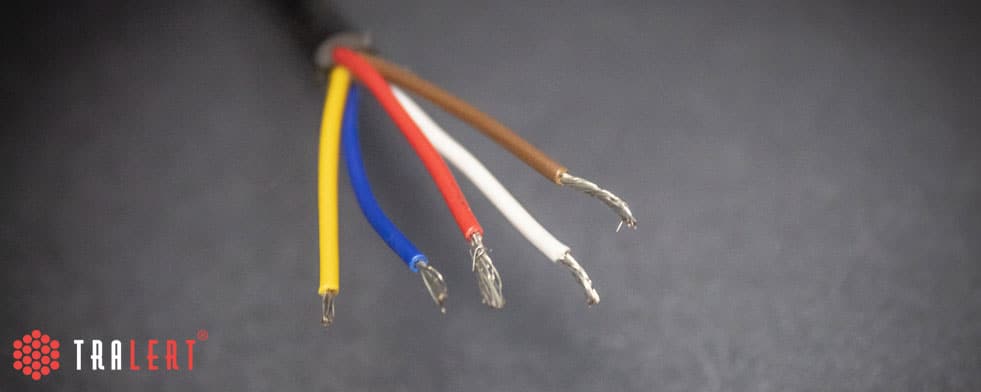What is a 5-core cable?
What exactly is 5-core cable? And what is a core? Very simply, a conductor is a copper wire protected by an insulation layer. The layer often consists of the materials: PVC, PE, Plastic or Rubber. This protective layer can be stripped so that the wire becomes visible. For stripping a cable you can use a Cable stripper the wire can consist of the materials: Silver, Gold, Copper or Aluminium.

The wires of a 5-core cable
When you look at a (5-core) cable, they almost always consist of different cores and a sheath that holds these cores together. There are not only 5-core cables but also, for example, cables with 3 cores or 8 cores. The heart of the cable is the wire that is connected to the connector, such as a 5-pin plug. The core can consist of a conductor (of copper) that conducts electricity well. Thus, the wire has a low resistance. Different colors are used to clearly indicate what kind of function the wire controls. Note! Suppliers can use different colors. Therefore, it is good to read the manual of the lamp. Another reason for the use of these sheaths is to prevent the wires (cores) from making contact with the other wires. If a conductor consists of multiple (copper) wires, it is called a "strand" (braided wire).
Why copper?
The price of copper varies over time and can therefore be called variable, comparable to raw materials such as gold and oil. However, the beauty of copper is that it is an ideal conductive and flexible material. A lot better than steel or aluminium can. It is a material with a soft texture and is therefore easy to process. This flexibility makes the raw material very suitable for, for example, 5-core cables that are subjected to large mechanical loads while the cable route is in motion. These specifications have made copper the standard material for all cables.
Does temperature also influence conductivity?
Yes, the temperature also affects the conductivity, not only with 5 core cables but with all cables! As the temperature rises, the atoms and electrons gain energy from this. This causes the conductive material to expand. Most metals are better conductors when they are cool. Even at extremely low temperatures, some conductors become superconductors. So conductivity can change the temperature of the material. Electrons therefore flow through conductors without affecting the atoms. Moving electrons experience resistance during the process. This allows an electric current to flow to heat the conducting material.